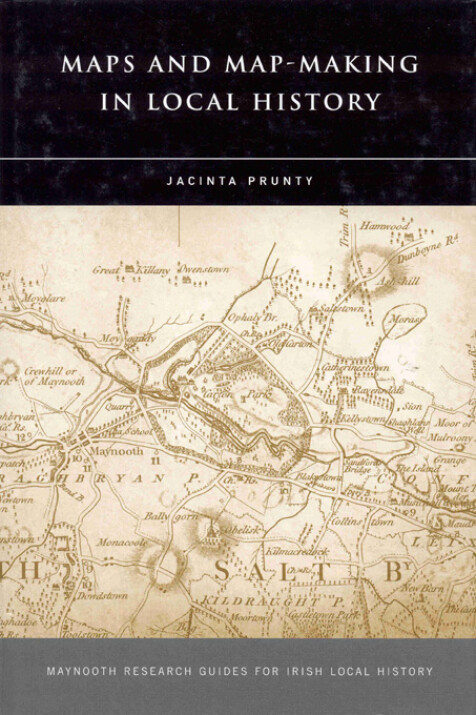Maps and Map-Making in Local History
Jacinta Prunty
‘Jacinta Prunty has written an indispensable guide to “maps and map-making in local history”. This book “does what it says on the tin” and provides in four chapters just about everything the local historian needs to know about Irish cartography: the history of Irish maps; how to read maps and how they read us; where they can be found; and how local historians can go about making their own maps’, Matthew Stout, Studia Hibernica.
‘… a work of refreshing appeal that is distinguished by its originality and by some very considerable strengths. Local historians in particular are likely to appreciate the wide-ranging approach and the clear writing … a helpful introduction to Irish maps in general’, Arnold Horner, Irish Historical Studies.
'I have never seen anything like this elsewhere, and it is a brilliant idea ... Irish local historians are truly blessed to have a book such as this as a guide.’ Alan Crosby, Local Historian.
‘Maps and map-making tells the story of man’s attempts to exercise power over nature and over other men. With over seventy maps, a succinct bibliography of four dozen items and countless detailed references in footnotes, this is a remarkable work of scholarship of enormous value to those fascinated by Ireland', Hugh Clout, Annals De Geographie.
'Maps and Map-Making in Local History is both a history of Irish maps and an invaluable resource in how to go about finding, reading and writing about these documents of history and culture. Jacinta Prunty has produced that rare thing, an expertly written but immensely readable volume, which without doubt belongs to every Irish historian’s bookshelf and is of huge value to the local historian at large', Nessa Cronin, Cartographic Journal.
'This book also provides two useful services not to be found in the British manuals mentioned above (map books by J.B. Harley, David Smith and Paul Hindle). First, its advice on the actual tracking-down of Irish maps and cartographic study-aids is commendably specific and down-to-earth: does one need an appointment, is there a fee to be paid, where are the catalogues kept, what is on open access – no practical detail escapes the author's vigilance. Secondly, and with equal thoroughness, she gives valuable lessons in cartographic design and execution to local historians who wish to map their own results. How to find maps, how to read maps, how to draw maps: put these themes together and we have a book that every serious student of Irish history must keep within easy reach', Professor J.H. Andrews.
‘This is essentially a practical guide, including notes on the map series that are immediately useful for local history, and thus family history in Ireland, plus information on the major repositories, catalogues and finding aids, ways to use the maps in research, and the ways the map themselves were made … There is no doubt that this will become the standard guide for anyone working with Irish maps. It is highly recommended for personal and society collections’, Paul Milner, Forum Magazine (Summer 2009).

